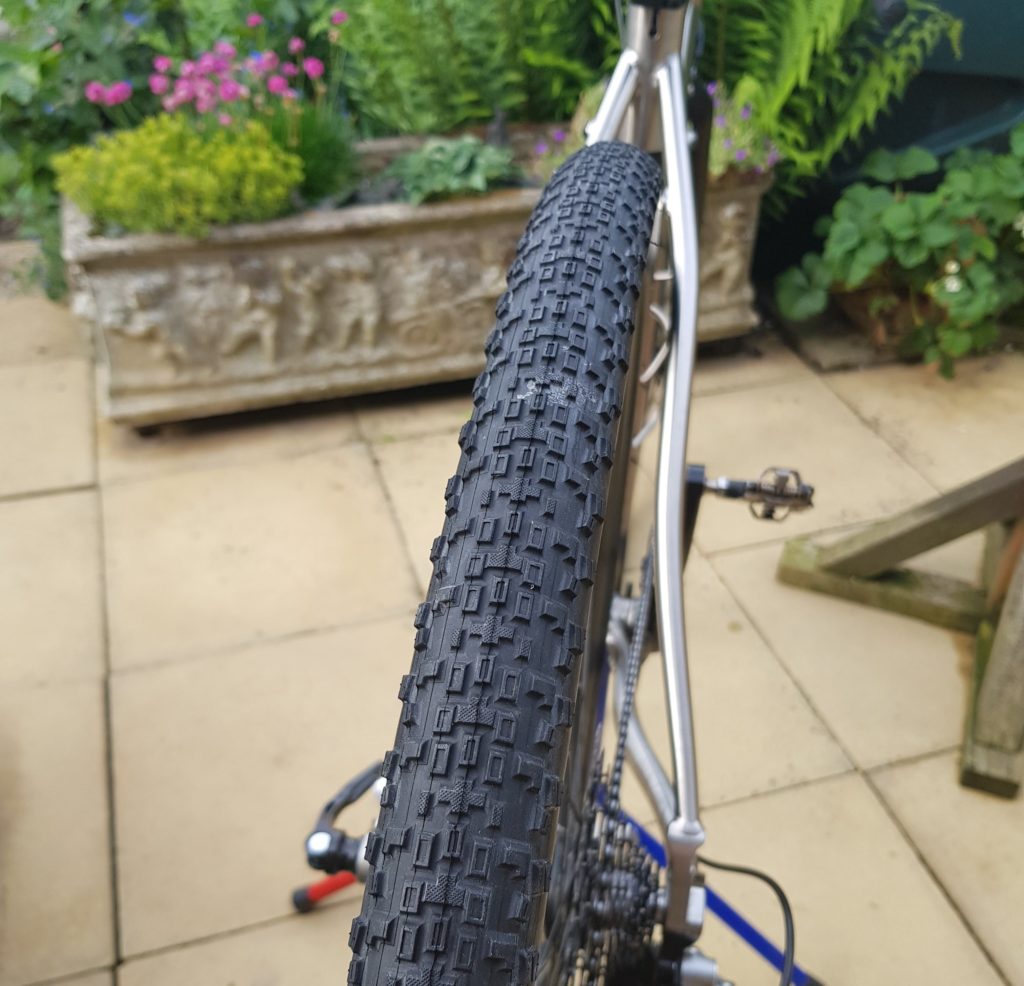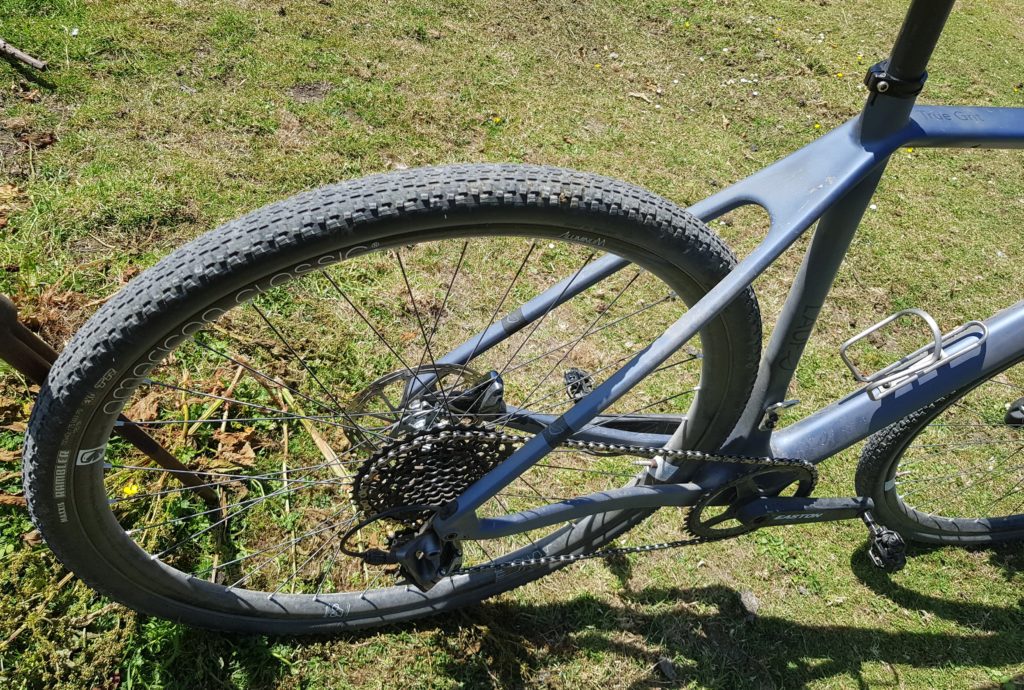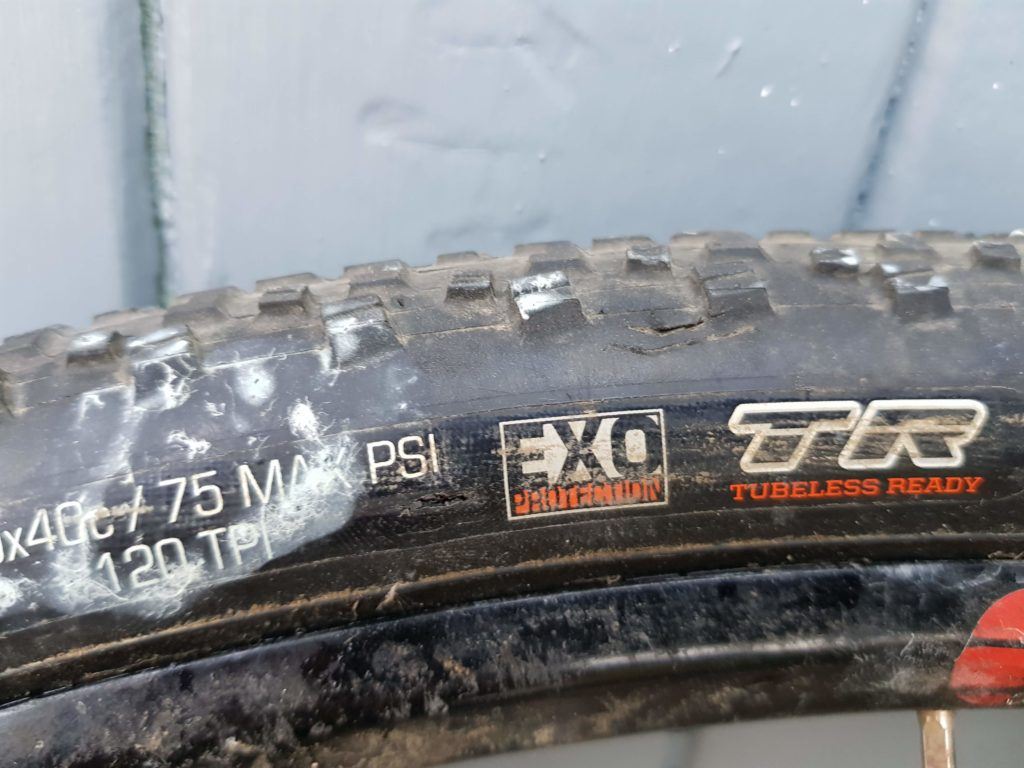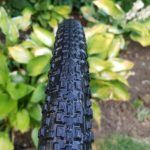Maxxis are well respected in the mountain biking world. They have tyres to cover every discipline from Cross Country to Downhill. When I saw their gravel-specific Rambler, I thought I’d found the Holy Grail.
The Rambler is a tubeless compatible, low profile, knobbly design boasting ‘EXO Protection’ which Maxxis claims is an extremely cut-resistant and abrasion-resistant material added to the sidewalls to reduce the chance of sidewall cuts and abrasions.
The Rambler is one of very few gravel tyres to feature a 120tpi carcass. The higher the tpi (threads per inch), the more supple the tyre. As I have been using predominantly 60tpi tyres of late, I was keen to see if I could tell the difference.
At a quoted 380g these are one of lightest 700×40 tyres on the market. ‘Less is more’ right? In this case, the answer is a definite yes! At £65 an end, the Rambler is comfortably in the premium range. (We have spotted them online for the more palatable £45 per tyre.)
Installation
The Ramblers were a breeze to install. They slipped onto the rim, a Hunt Carbon 30, using only my thumbs. Seating them was equally easy, requiring nothing more than a track pump.
Topped up with Finish Line Tubeless Sealant and left overnight, the tyres didn’t deflate or display any signs of sealant leakage from the sidewalls by the morning.

Maxxis Rambler ready for action.
Ride Impressions
The local bridleways around ADVNTR HQ stretch out onto the Brecklands in Norfolk. The soil is predominantly sandy. In dry conditions it twinkles as the sunlight is reflected off a myriad of small, sharp and flinty rocks. Our forest trails are fast, rooty and swoopy affairs and great for chucking a bike around at speed… If your tyres have the grip.
I set the pressures at 36psi front and 38psi rear and headed out. I was immediately impressed by the low rolling resistance on tarmac. They spun up to speed quickly and were happy to stay there with minimal effort.

The Maxxis Rambler is a very fast tyre in the right conditions.
Off-road is where the Ramblers really come into their own. Gravel and hardpack surfaces are their forte and the speed, grip and suppleness of the tyres give you an incredibly composed ride.
Looser conditions such as sandy soil quickly overwhelm the small knob profile and you’ll soon be slip sliding away!
In damp conditions the tyre struggles to shed mud and you need to take care that you don’t clog up!.
Climbing is very much a sitting down affair. When you stand up and unweight the rear wheel, the tyre loses traction.
The Rambler bites well into corners allowing you to carry a lot of speed through the bends. Get used to the amount of grip on offer and you will soon be flying through twisty trails.
Puncture Prone
Despite having ‘EXO Protection’, the Rambler is a little delicate. The supple rubber and lightweight casing give a fantastic ride but stray too close to something sharp and pointy and you’ll soon find hear the dreaded whoosh of air escaping at high pressure.
Thorns went through the tyre like the proverbial hot knife going through butter. I flatted on every off road ride and within a month, the Ramblers were shot to pieces. They are now only fit for the bin.

Punctures are the Ramblers weak point.
Conclusion
For rapid motion along road and hard pack, the Ramblers excel. Their light weight means they could make an excellent race tyre. As long as you have cleared the trail of potential puncture hazards first!
As an all purpose or bikepacking tyre, the Rambler is unfortunately just too thin and puncture prone to recommend.
If Maxxis released a heavier duty version of the Rambler, it could prove to be a very popular tyre. Until then we’ll be giving them a miss.
Last modified: 21st October 2020














Rambler 40c TR SS have better puncture protection vs 40c TR EXO
I’ve got a pair of the 40mm 120tpi ramblers. I used one on the front of my fully loaded touring rig on a 500km tour that included about 100km of gravel road, and since then I’ve had them front and rear for a few hundred more km of gravel riding. Some of the gravel roads are quite rough, IMO. I’ve never had a puncture with them, but then I think I have narrower rims and I use inner tubes. I wonder if the problem with puncturing is compounded by the lower pressure with tubeless set up and wider rims – which will expose the side wall to more probability of damage I should think.